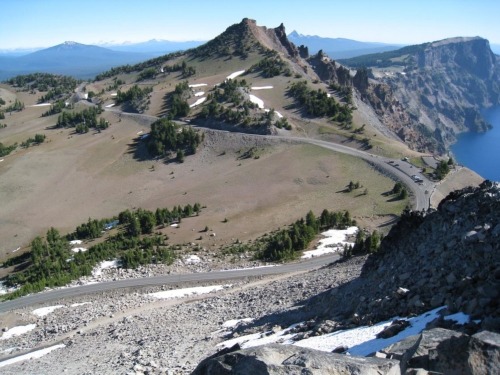#national register
Preservation Profile: Dennis Lewarch
Since the late 1960s, the Suquamish Tribe of Washington State has organized to demand their legal and civil rights in a path toward self-determination. Along the way, non-Indian partners like Dennis Lewarch have played important roles as allies.
The Park Cultural Landscapes Program recently had a chance to meet (safely) for conversation with Dennis. He shared reflections on serving the interests of the Suquamish as their first Tribal Historic Preservation Officer (THPO), focusing on completion of a Traditional Cultural Place (TCP) nomination for the National Register.
- Read the Preservation Profile
- More ways to recognize Native American, Alaska Native, and Native Hawaiian history and heritage, during Native American Heritage Month and year-round: Native American Heritage Month with NPS and partners
Post link
Army Corps of Engineers Road System Added to the National Register
Crater Lake National Park, Oregon
The Army Corps of Engineers Road System at Crater Lake National Park is among Oregon’s latest entries in the National Register of Historic Places.
The National Park Service accepted the nomination on August 12. NPS staff historian Stephen Mark took the lead in writing the nomination, which centered on a previously little-known effort by the Army Corps in highway engineering and construction that happened from 1910 to 1919 in the park.
The Army Corps of Engineers Road System, a precursor to the historic Rim Drive, is significant for its association with the earliest period of highway engineering in Oregon.
As Stephen Mark describes, “Unlike today’s roads, this system came into being with hand tools, horse power, and a couple of wood-burning steam shovels.”
The road system was the first federally funded and supervised highway project in Oregon and is the only road project in Oregon attributed to the Army Corps of Engineers.
The road system is the fourth historic district listed at Crater Lake National Park, with others at Rim Village, at Park Headquarters and along Rim Drive.
- Discover more about the nomination and the history of the road system: News Release: “National Register Listing for Army Corps of Engineers Road System”
- Visit the park website to plan your visit: Crater Lake National Park
- Find more from the National Register of Historic Places

A car on a road in front of impressive snow banks, almost completely obscuring a house, shows the winter conditions at Crater Lake, 1949.
(NPS/Harpers Ferry Center Archives)
Post link






